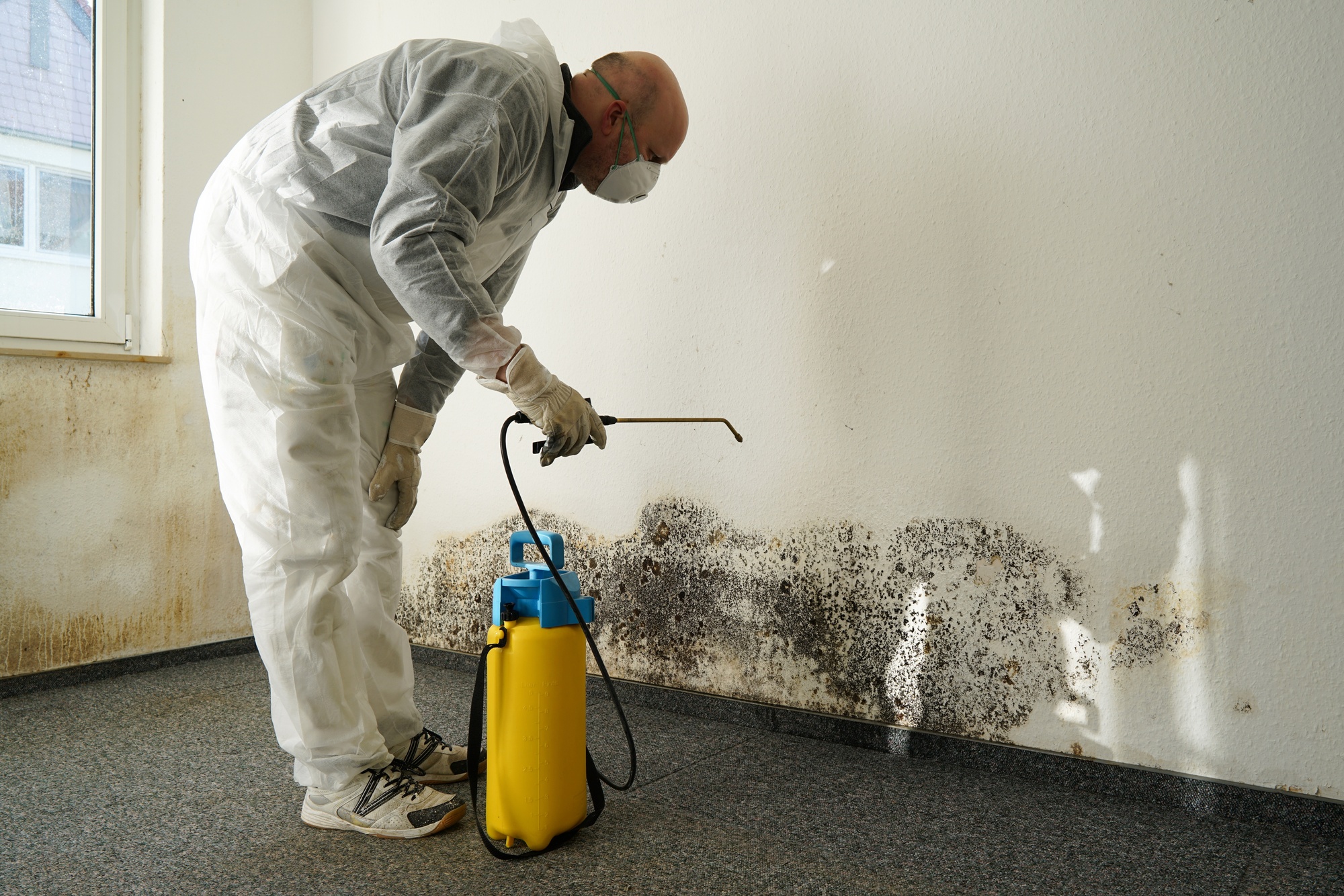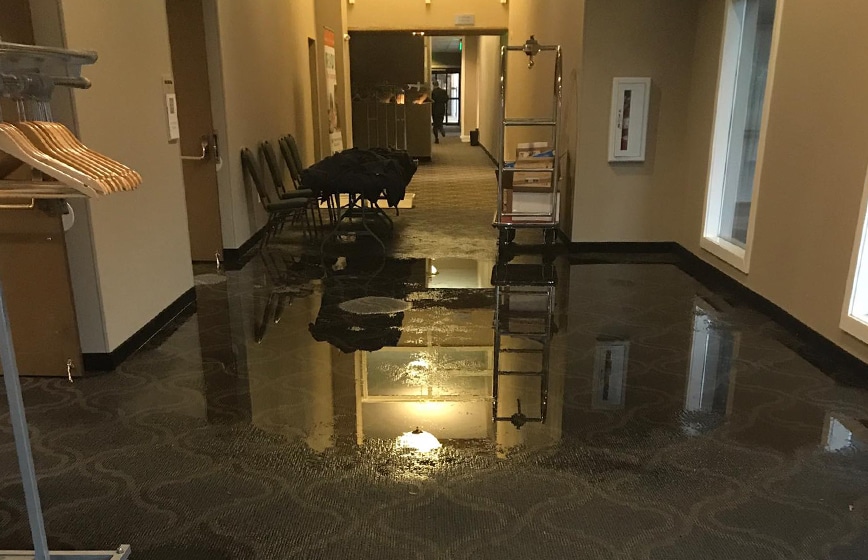Water Damage Restoration 101: Recognizing the Process and Cost
Water damage can strike unexpectedly, leaving house owners in a state of complication. Understanding the remediation procedure is crucial for efficient recovery. From evaluating the damage to choosing the best provider, each action influences the total end result and price. Factors such as the sort of water damage and necessity additionally play a substantial function. What are the specific techniques utilized in repair, and just how can one plan for possible expenses?
Kinds of Water Damage

Initial Analysis and Inspection

Water Removal Methods
Following the preliminary assessment, reliable water extraction methods are employed to mitigate damage and prevent additional issues. These strategies entail the use of specific equipment such as submersible pumps and industrial-grade vacuums - Water Damage Restoration. The selection of technique depends on the quantity of water existing and the sort of materials impacted. For standing water, submersible pumps are usually made use of for fast removal, while vacuum cleaners are perfect for drawing out water from carpets and furniture. Additionally, advanced techniques like water extraction mats may be employed for hard-to-reach locations - Flood Cleanup Services. The objective is to remove as much water as possible, minimizing the potential for mold development and architectural damage. Motivate and efficient water extraction is crucial in the overall water damage remediation procedure
Drying and Dehumidification Process
When the water extraction is complete, the drying out and dehumidification procedure comes to be critical to restoring the damaged location. This stage generally uses industrial-grade dehumidifiers and air moving companies to efficiently decrease moisture levels. The dehumidifiers reel in wet air, eliminating excess humidity, while air moving companies circulate air to accelerate dissipation. Surveillance devices is usually utilized to track moisture and temperature degrees, ensuring perfect drying problems. The period of this process can differ depending on the degree of the water damage and ecological elements. It is important to completely dry all influenced products, including wall surfaces, flooring, and furnishings, to prevent mold and mildew growth and structural damage. Correct execution of this action is essential for a successful repair end result.
Cleaning Up and Sanitizing Afflicted Areas
A detailed first evaluation and inspection of affected locations is essential to identify contamination levels when the drying out procedure is full. Flood Cleanup Services. Efficient cleaning techniques and suitable items should then be employed to get rid of debris and stains. Ultimately, sanitization and sanitation methods are vital to assure that harmful pathogens are removed, recovering the room to a safe condition
Initial Assessment and Inspection
Prior to beginning any type of remediation efforts, a complete preliminary analysis and examination of the affected locations are essential for efficient cleansing and sanitizing. This procedure involves determining the extent of water damage, figuring out the source of the water breach, and examining the materials affected. Inspectors generally search for indicators of mold growth, structural honesty issues, and harmed belongings. The evaluation also includes inspecting dampness levels using customized tools to guarantee no concealed water pockets continue to be, as these can result in additional problems. Recording the findings is necessary for preparing the next steps in the reconstruction procedure. A comprehensive preliminary analysis enables repair specialists to develop a targeted strategy for reliable cleaning and sterilizing, eventually lessening damage and health and wellness risks.
Cleansing Strategies and Products
Reliable cleaning and disinfecting of water-damaged locations call for a variety of products and strategies tailored to the particular products influenced. For permeable surface areas like drywall and carpets, removal approaches are necessary to remove excess dampness, adhered to by deep cleansing with specialized cleaning agents. Non-porous products such as ceramic tile or metal can be cleaned up making use of commercial-grade cleansers that properly remove pollutants. Steam cleansing is another efficient method, particularly for carpetings and upholstery, as it uses heats to remove germs and mold (Water Damage Restoration). Furthermore, environmentally friendly items are increasingly prominent for their safety and effectiveness - Flood Cleanup Services. Eventually, selecting the ideal cleaning methods and items not only assures instant cleanliness yet additionally aids in stopping further damage and wellness dangers related to water intrusion
Sanitization and Disinfection Techniques
When resolving water damage, appropriate sanitization and sanitation methods are vital to assure the safety and security and health of the damaged environment. After first cleaning, surfaces need to be treated with proper anti-bacterials to get rid of virus, mold, and microorganisms that flourish in wet conditions. Usual techniques include using EPA-approved chemical disinfectants, which can be used via splashing or wiping techniques. Furthermore, ultraviolet (UV) light systems can efficiently disinfect areas by counteracting microbes without rough chemicals. The option of technique frequently relies on the kind of materials impacted and the degree of contamination. Ultimately, comprehensive sanitization not only restores a safe living space but additionally aids protect against future wellness risks associated with remaining dampness and mold and mildew development.

Repair Services and Restoration Options
Reviewing the damage brought on by water exposure is crucial for establishing the proper fixings and reconstruction choices. Homeowners may encounter various issues, consisting of harmed drywall, deformed floor covering, and jeopardized structural components. Depending upon the level of the damage, repair work may include replacing areas of drywall, mounting new floor covering, or enhancing architectural beam of lights. In instances of severe damage, complete substitute of damaged products may be needed. Additionally, professional conservators commonly advise making use of moisture meters to examine surprise dampness degrees prior to deciding on the most effective course of action. It is essential to act quickly to stop mold growth and more deterioration. Choosing the right options not just brings back the property yet also guarantees long-term safety and performance.
Factors Affecting Restoration Costs

The level of water damage straight impacts the repair costs home owners can expect to sustain. Factors such as the source of the water, the duration of direct exposure, and the affected materials substantially influence prices. Tidy water damage from a broken pipe is usually much less costly to bring back contrasted to damage caused by sewage. Furthermore, the degree of contamination determines the demand for specialized cleaning and disposal services, better increasing expenses. Geographic place likewise contributes, as local labor rates and availability of remediation services can vary. Ultimately, the seriousness of the response influences prices; quicker treatments normally cause decrease total expenses by preventing further damage. Understanding these elements is important for house owners when approximating remediation costs.
The three primary types of water damage are classified based on contamination degrees: tidy water, grey water, and black water. A thorough first assessment and inspection are essential steps in the water damage restoration procedure. For standing water, submersible pumps are usually utilized for rapid removal, while vacuum cleaners Mold Remediation After Water Damage are suitable for drawing out water from carpetings and upholstery. The degree of water damage directly impacts the restoration sets you back house owners can expect to sustain. Clean water damage from a busted pipe is generally much less expensive to recover contrasted to damage caused by sewer.